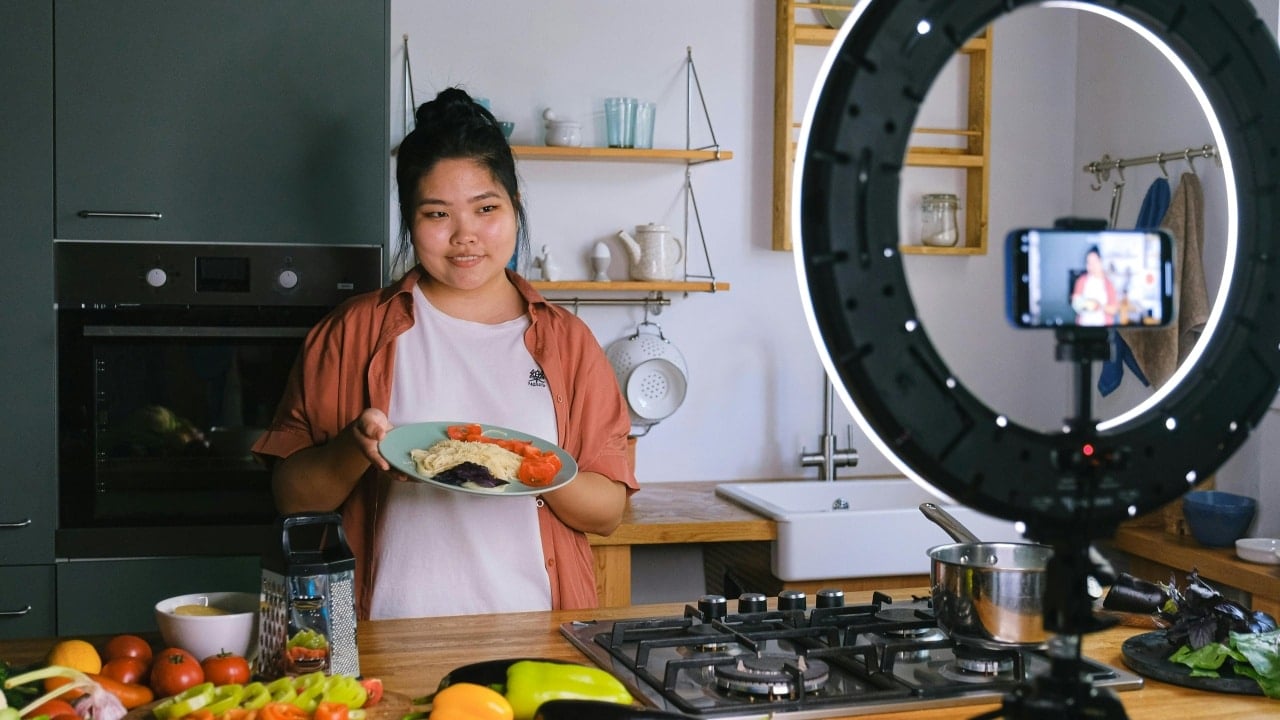The world of food has always been a universal language, bringing people together across cultures and continents. With the rise of social media and digital platforms, sharing culinary experiences has become more accessible than ever. If you have a passion for food and a desire to connect with a broad audience of foodies and enthusiasts, becoming a food influencer might be your calling. This guide will walk you through the steps to develop your brand, find your niche, and create engaging food content that resonates.
Finding Your Niche in the Culinary World
The first step in your journey is to identify what sets you apart in the vast landscape of influencers who post content about food. Finding a niche not only helps you stand out but also allows you to connect with a specific audience that shares your interests.
- Dietary Focus: Consider specializing in vegan, gluten-free, keto, or other dietary lifestyles. For example, Minimalist Baker is a popular food blog that focuses on simple, plant-based recipes requiring ten ingredients or less.
- Culinary Techniques: If you’re skilled in a particular cooking method like sous-vide, fermentation, or baking, make it your signature.
- Cultural Cuisine: Sharing recipes and stories from a specific culture can attract an audience interested in authentic culinary experiences. Chopstick Chronicles is a blog dedicated to Japanese home cooking, offering traditional and modern recipes.
- Food Reviews and Exploration: If you love discovering new restaurants and street food, becoming a food video blogger who documents these experiences could be your path. Mark Wiens is a renowned vlogger known for his travel and street food videos around the globe.
Whether you’re a food influencer focused on baking delicious treats, an organic food enthusiast, someone who enjoys capturing foam art on your coffee, a tea lover, or a restaurant frequent, Intellifluence has categories to suit your interests. When you register as an influencer on Intellifluence, you can select up to 10 specialties that interest you. Some of the categories we offer include baking, coffee and tea, food and drink, organic, and restaurants.
Choosing Your Format: Blog vs. Vlog
Deciding between starting a food blog or becoming a food vlogger depends on your strengths and comfort level with different types of media.
Starting a Food Blog
A food blog is ideal if you have a flair for writing and photography. It allows you to share detailed recipes, stories, and high-quality images.
- Pros:
- Flexibility in content length and depth.
- Easier to optimize for search engines (SEO).
- Readers can bookmark and revisit recipes easily.
- Requirements:
- A good camera for food photography.
- Basic knowledge of blogging platforms like WordPress or Squarespace.
- Writing skills to engage your audience.
- Popular Food Bloggers: Sally’s Baking Addiction focuses on baking recipes with step-by-step photos, while Pinch of Yum offers a mix of healthy and indulgent recipes with stunning visuals.
Becoming a Food Vlogger
If you’re comfortable in front of the camera and enjoy storytelling through video, vlogging might be the way to go.
- Pros:
- High engagement rates on platforms like YouTube and Instagram.
- The ability to showcase recipes and food experiences in a dynamic way.
- Opportunities for viral content through entertaining videos.
- Requirements:
- Video recording equipment (camera, microphone, tripod).
- Video editing software and skills.
- On-camera presence and storytelling abilities.
- Popular Food Vloggers: Binging with Babish recreates recipes from movies and TV shows with a cinematic style, while Laura in the Kitchen offers approachable home cooking recipes with a personal touch.
Getting Started: Essential Tools and Equipment
Whether you choose to blog or vlog, having the right tools is crucial for producing high-quality content.
For Food Bloggers
- Camera: A DSLR or mirrorless camera for sharp images. The Canon EOS Rebel series is a good starting point.
- Lenses: A 50mm lens is great for food photography.
- Lighting: Natural light is ideal, but investing in softbox lights can help.
- Props: Collect plates, utensils, and backgrounds to style your food.
- Photo Editing Software: Adobe Lightroom or free alternatives like GIMP.

For Food Video Content Creators
- Video Camera: A camera capable of shooting in at least 1080p HD. The Sony ZV-1 is popular among vloggers.
- Microphone: A lapel or shotgun microphone for clear audio.
- Tripod or Gimbal: For stable shots.
- Video Editing Software: Adobe Premiere Pro, Final Cut Pro, or free options like DaVinci Resolve.
- Kitchen Tools: Quality cookware and utensils to prepare and present your dishes effectively.
Developing Your Brand Identity
Creating a strong brand identity helps you become recognizable and memorable.
- Name and Logo: Choose a catchy name and design a logo that reflects your niche.
- Visual Style: Maintain a consistent color scheme and photography style.
- Voice and Tone: Decide if your content will be humorous, instructional, casual, or formal.
- Mission Statement: Clearly define what your audience can expect from you.
Creating Engaging Food Content
Content is king, and producing high-quality, engaging food content will attract and retain your audience.
- Recipe Development: Ensure your recipes are original, tested, and easy to follow.
- Storytelling: Share personal anecdotes or cultural insights related to your dishes.
- Quality over Quantity: Focus on producing well-crafted content rather than churning out frequent but mediocre posts.
- SEO and Keywords: Use relevant keywords like “food influencers,” “food vloggers,” and “starting a food blog” to increase your visibility.
Connecting with Your Audience
Building a community around your brand is essential for growth.
- Engage on Social Media: Be active on platforms like Instagram, Facebook, and Pinterest.
- Respond to Comments: Interact with your audience by replying to comments and messages.
- Collaborations: Work with other influencers to expand your reach.
- User-Generated Content: Encourage followers to share their recreations of your recipes.
Growing Your Food Influencer Brand
Expansion requires strategic planning and consistency.
- Regular Posting Schedule: Maintain a consistent posting schedule to keep your audience engaged.
- Analyze Metrics: Use analytics tools to understand which content performs best.
- Monetization Strategies:
- Ad Revenue: Earn from ads on your blog or YouTube channel.
- Sponsored Content: Partner with brands for sponsored posts or videos.
- Affiliate Marketing: Promote products and earn a commission on sales.
- Product Sales: Consider writing a cookbook or selling merchandise.
- Stay Authentic: Authenticity builds trust. Promote products you genuinely like and stay true to your brand.

Featured Influencer: Timothy Knezie
Hello, I am an influencer that specializes in creating drinks & food recipes and also reviews other drinks and foods as well! I am just recently starting to get into the food creations, but have had great engagement and feedback on them. My goal is to start traveling to different restaurants and bars in the future to showcase and review unique foods and drinks around the world. I have a lot of passion for social media so any brand deal I take on, I have to love the product myself or I will not work with them.
Learning from the Best: Examples of Successful Food Influencers
Studying successful food connoisseurs can provide inspiration and insights.
Samin Nosrat
- Platform: Author and host of the Netflix series Salt Fat Acid Heat.
- Unique Approach: Focuses on the fundamental elements of cooking, making it accessible to all.
- What to Learn: The power of educational content that empowers viewers.
Nisha Vora of Rainbow Plant Life
- Platform: Food blog and YouTube channel specializing in vegan recipes.
- Unique Approach: Combines colorful, vibrant food photography with detailed cooking tutorials.
- What to Learn: The importance of visual appeal and catering to a growing dietary niche.
David Lebovitz
- Platform: Food blog featuring French cuisine and desserts.
- Unique Approach: Blends recipes with storytelling about life in Paris.
- What to Learn: The effectiveness of combining travel, culture, and food.
The Intellifluence database comprises over 98,000 influencers who have expressed a keen interest in reviewing products related to baking, coffee and tea, food and drink, organic items, and restaurants. By registering as an influencer at no cost, individuals can join a community of content creators who are actively collaborating with brands and producing high-quality food content. We invite you to take advantage of this opportunity to enhance your professional network and showcase your expertise in the culinary sector.
Overcoming Challenges
Be prepared for common challenges and know how to address them.
- Content Saturation: Stand out by offering a unique perspective or specialized niche.
- Technical Skills: Invest time in learning photography, videography, and editing.
- Consistency: Use content calendars and batching techniques to maintain regular posting.
- Criticism and Feedback: Develop a thick skin and use constructive feedback to improve.
Embarking on the journey to become a food influencer is exciting and rewarding. It offers the opportunity to share your culinary passion, connect with like-minded individuals, and potentially turn your hobby into a full-time career. Remember that success doesn’t happen overnight. Stay patient, be persistent, and keep refining your craft. With dedication and creativity, you can carve out your own space in the dynamic world of influencers who focus their social media content on food.

SallyBot is committed to helping users get the most out of Intellifluence. By helping brands create campaigns, providing unparalleled customer service and offering useful advice, nothing makes SallyBot happier than hearing she is liked… Really, really liked.






